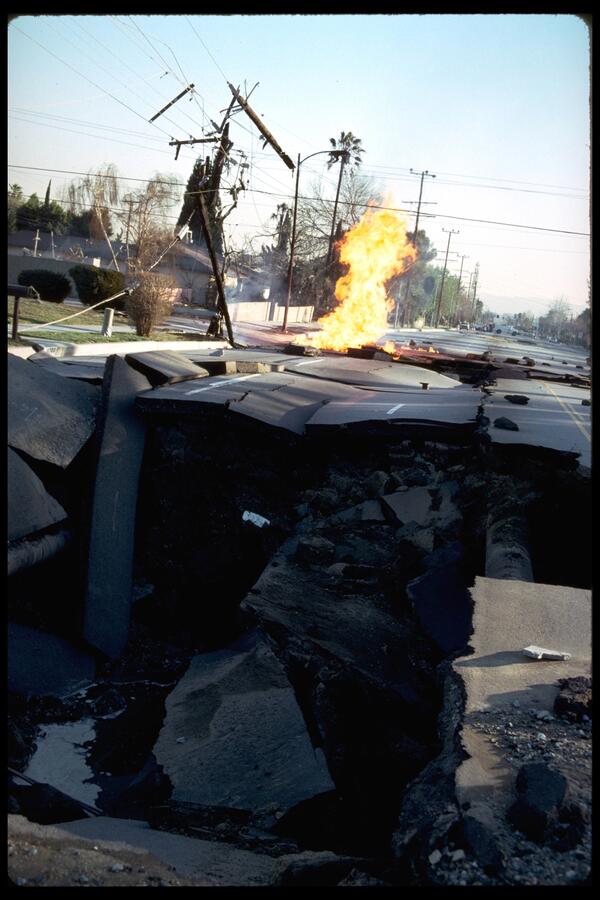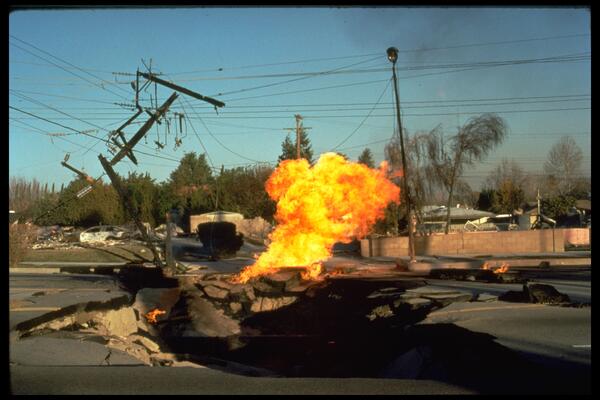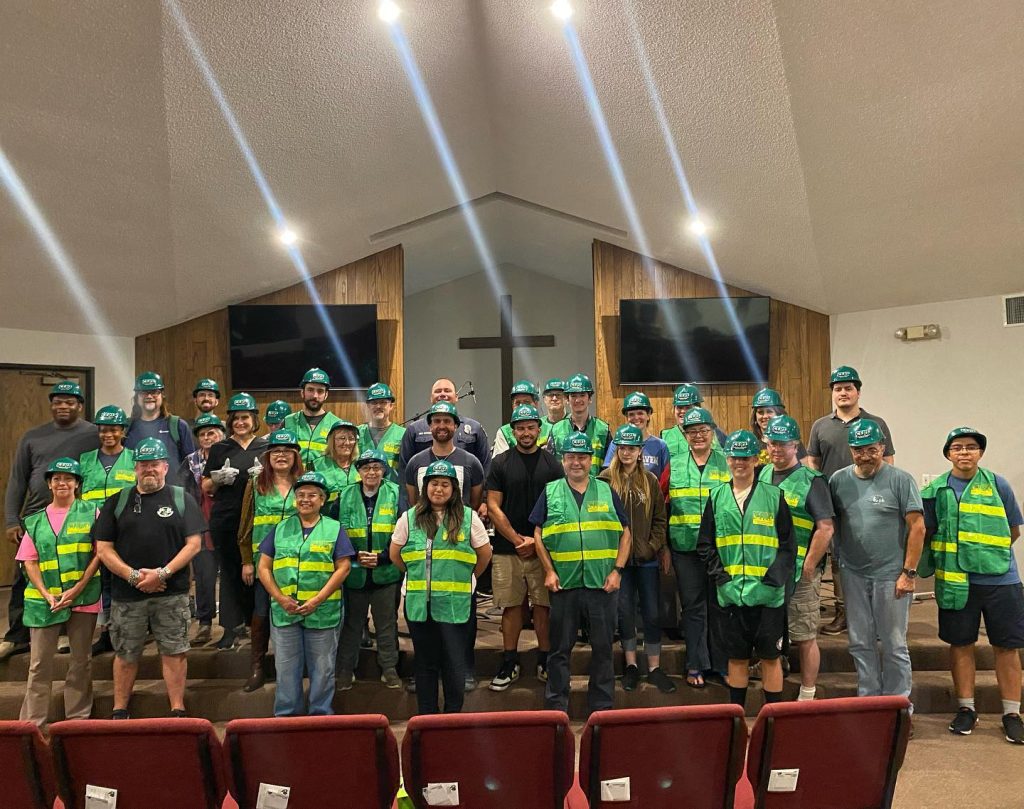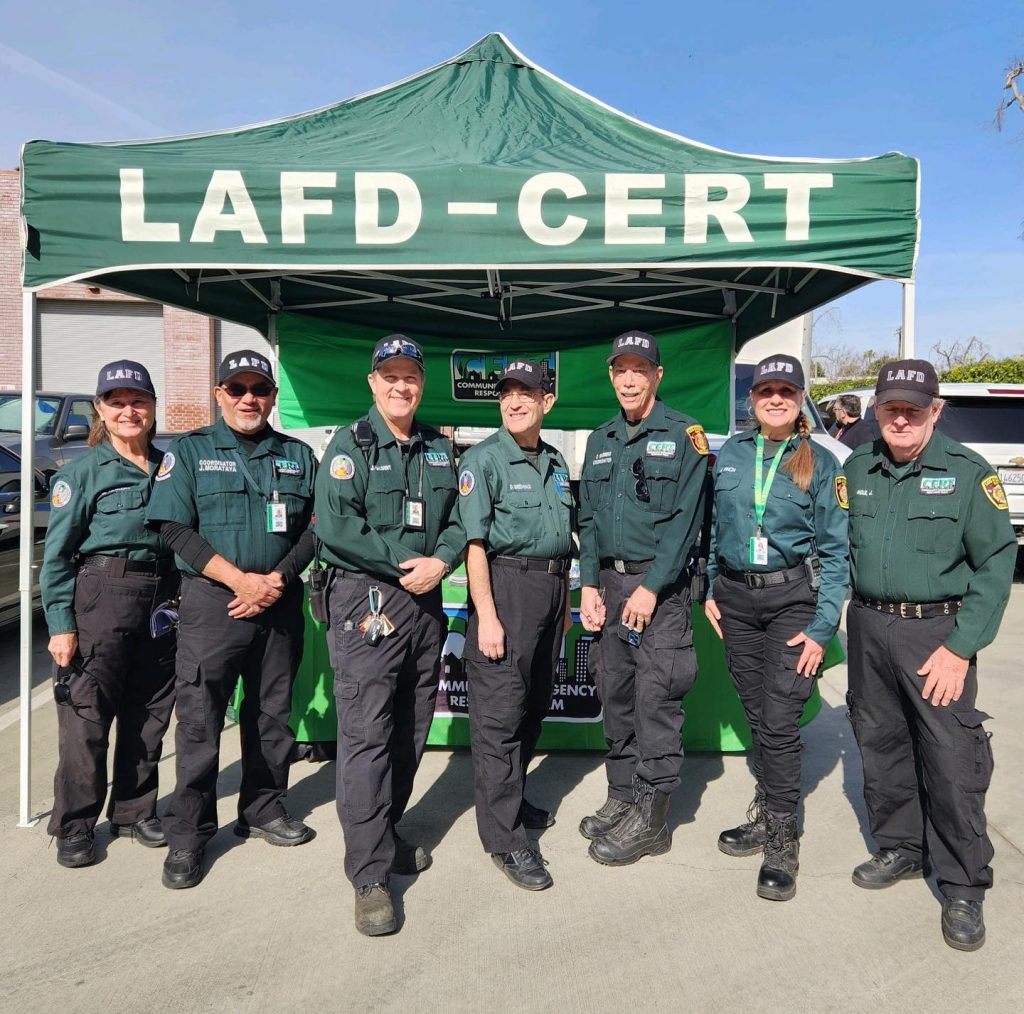
Firefighter and Public Information Officer with the Los Angeles Fire Department David Ortiz remembers the earthquake that shook the city when he was a young, non-paid “explorer” with the department. He is one of a few firefighters that responded to the earthquake 30 years ago and is still with the department today; most of the colleagues that worked alongside him that day are now retired. While the devastating event was centered in Northridge, Ortiz recalls the effects were felt throughout the entire city and the lessons the fire department learned from them.
“The Northridge earthquake that occurred in 1994 was very significant. It occurred at 4:30 in the morning, where most people in Los Angeles were asleep and it was very devastating because of the deaths that occurred, the damage it caused and it really demonstrated the need for people in California to be prepared,” Ortiz said.
Moments after the Northridge earthquake, the fire department reacted and responded immediately.
“As soon as any earthquake is reported to our dispatch center, the fire department goes into what we call an ‘earthquake mode.’ All fire stations go out and drive their districts focusing on what we call target hazards. We do a drive-by survey, what we call a ‘windshield survey,’” Ortiz said. “We’ll look for any obvious damage, smell for gas leaks, see if there’s any person trapped, any fires”.
LEFT: A fire breaks out after the Northridge Earthquake. Image courtesy of USGS. Public Domain.


It is important to note that in the immediate aftermath of any sizable earthquake, the Los Angeles Fire Department is in triage mode, prioritizing only the emergencies. Firefighters are limited by the size of the department; on any given day, there will be about 1,000 sworn in firefighters actively on duty. In the event of a major earthquake there will likely not be a firefighter for every injury, every fire. Of course, reserve firefighters and partners from around the state will be called to assist, but that help will take time to arrive.
In other words, the actions you take in the moments immediately following the shaking may be the difference between life and death. Emergency preparedness advocates encourage everyone to learn how to use a fire extinguisher so that you can extinguish small fires that may light after an earthquake. Those small fires can quickly grow into much larger fires if there are damaged gas lines around you.
Keep in mind that in the event of a major earthquake, you will not only have to worry about your property, but also that of your neighbors. You may be able to extinguish the small fire at your house, but if your neighbor is not able to extinguish theirs, the flames can quickly spread to your property. On the other hand, you may be in a position where your neighbors are the only people available to help you if you’re in trouble.
Prior to Northridge, during a visit to other earthquakes in Mexico City and in Japan, an LAFD assistant noticed that these cities had empowered their civilians to do a lot more for their communities. He learned more about it and eventually conceived a similar program in the city of Los Angeles. In 1994, the Community Emergency Response Team program, or CERT, was still very young. However, Los Angeles was the first fire department in the U.S. that implemented this program and now it has expanded across the world.
“Fire departments and police departments across the United States now embrace the CERT program. What they do is they teach the citizens to do the basics to be able to fight a small fire with a fire extinguisher, turn off utilities like water or gas to prevent a fire or water damage,” CERT participants are also taught first aid and CPR.
RIGHT: The Tujunga-Sunland CERT class graduation, October 2022. Image from LAFD CERT Program Facebook page.


“Empowering these different communities within the neighborhood is a force multiplier for the fire department during times of disaster. CERT is one of the wonderful things that came after Northridge that has benefited the world, particularly the United States,” said Ortiz.
On top of all of these procedures in place by the LAFD and community members to aid during a crisis, there is also a network of firefighting agencies across the state that the department will be able to access in the event of a major emergency.
LEFT: CERT Team at the Battle of the Badges Blood Drive, February 2023. Image from LAFD CERT Program Facebook page.